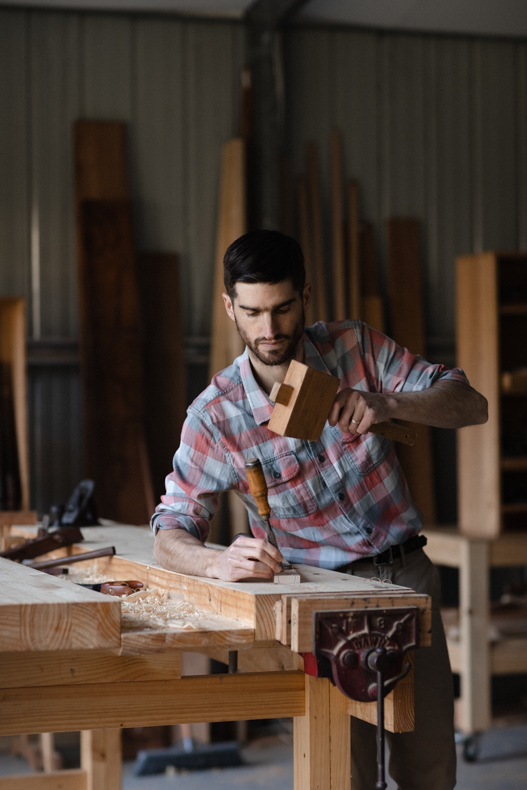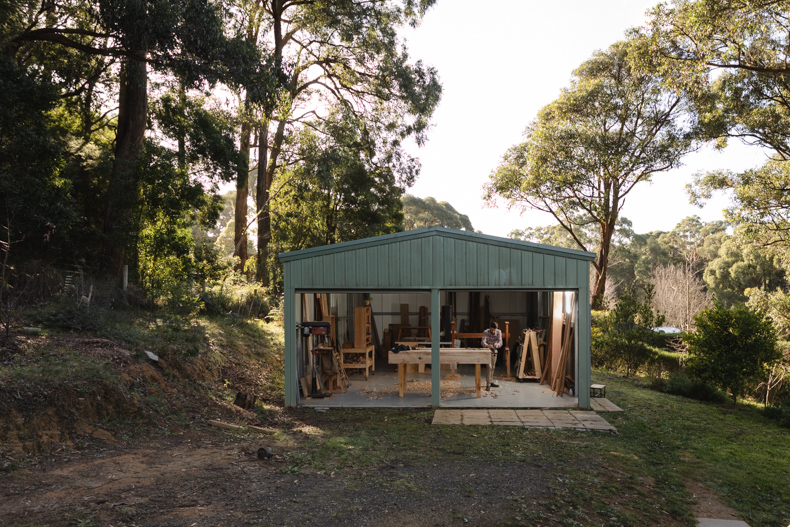Former singer and guitarist Lloyd Anderson has turned his attention to furniture, crafting pieces inspired by the harmony and proportion of music. We spoke to Anderson about his Northland workshop and his design process.
HOME: Tell us about your space in Kerikeri. How does your workshop operate?
Lloyd Anderson: My workshop is an intimate space, not much bigger than a double-car garage but it is set out in a way that allows me maximum efficiency. I have a few simple machines, which get the wood straight, and then I finish the pieces by hand. My hand tools are close, within reach of the workbench and are very dear to me. The hand planes take thin slices of the timber to create a shine that can’t be replicated with machining. My chisels and saws bring the delicate look and strength of hand-cut dovetails. They allow me quiet and versatility when playing with new shapes and ideas.

H: Furniture design and production is a fine art, especially with hand tools. How did you learn the process?
LA: I am mostly self-taught but have drawn invaluable knowledge from my woodworking mentor, Evan Dunstone. Evan is a master craftsman and has been working wood for about as long as I’ve been alive.
In a previous life, I was a musician and this informs my sense of proportion and harmony. I feel all the arts inform and relate to one another.
H: Can you tell us about your design process?
LA: All of my designs have arisen from a client’s need. I ask the client to come up with a brief and ask how the piece should fit in with their lifestyle. From there, I apply my aesthetic sensibilities to create a piece of furniture that carries meaning and elegance.

H: Where do you source your timber and what characteristics do you look for?
LA: I prefer to source my timber directly from a local producer if possible. There is an award-winning farm in Kaitaia where I source Blackwood and Silky Oak. If using American timber, I make sure it comes from well-managed forests that are expanding in size. Each timber has its own personality, whether it be the grandeur of Walnut, the kindness of Blackwood or the stoicism of Oak. Each room requires furniture that suits the mood of the space and different timbers have that ability to “talk” to the room.

H: Finally, what is your favourite piece to date?
LA: The Elodie side table, which is named after my daughter. It’s the smallest piece in my portfolio but as far as design goes, it feels very complete and resolved. It can be used to accent any room of the house. We use one next to the couch and another as a bedside table. The carved feature on the top of the legs offers a pleasing visual play for the eye and is a pleasure to execute with a little gouge chisel.




